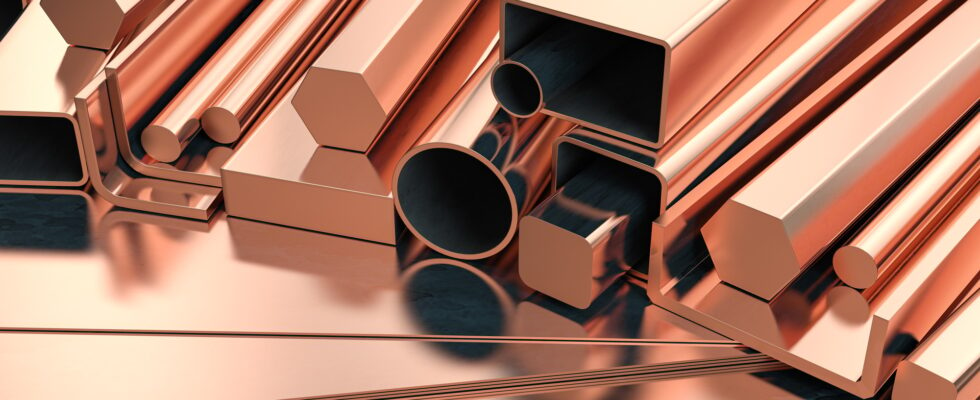
Amid the global trend towards decarbonisation, the world faces a significant rise in demand for copper to support electrification and renewable energy goals. With only 30% of the required volume able to be satisfied by recycling; the stark reality is the balance will need to be mined and refined.
With cleaner energy solutions such as solar, wind and water, the industry needs to mine twice the amount of copper over the next decade. Additionally, the growing demand for AI-powered data centres and electric vehicles is contributing to this increase in requirements for copper.
However, mining copper is becoming increasingly challenging. As ore grades decline, millions of additional tonnes of rock need to be dug up to produce the same amount of metal. With this increased intensity, coinciding with rising barriers to social license, mining needs to accelerate efforts to reduce its environmental footprint.
At the same time, miners are under pressure to decarbonise. The mining industry aims to achieve net zero emissions by 2050, with many companies committing to reduce emissions by 50% to 100% over the next 10-20 years.
The copper challenge
Current copper production rates are already struggling to meet demand, with a 6.6 million tonne shortfall anticipated by 2031. This, combined with declining grades, would require miners to increase the volume of ore processed by 44%, with an additional 1 billion tonnes of ore per year required on top of recently announced expansions to meet market requirements.
While existing copper can be recycled, this is only part of the solution. As CSIRO observes, new reserves must be found to meet the growing demand. But it can take well over a decade for newly discovered deposits to get to commercial production – which will be nowhere near fast enough to provide the copper we need to power the energy transition.
Improving productivity and sustainability
Whatever the sources of more copper – whether from brownfield or greenfield sites, new processing techniques such as coarse particle recovery or simply digging up more ore – the result will be a vast increase in the use of diesel-powered equipment like trucks and diggers, which are the primary contributors to mining’s emissions. An average mine site, with a fleet size of approximately 40 trucks, generates approximately 150,000 tonnes of carbon per year from diesel equipment.
Miners need to maximise efficiency in their energy use and production now. Fleet electrification is still in its early stages, with technologies yet to be proven, developed, commercialised and built at scale. For instance, a four hundred-tonne mine truck requires up to 7,000% more energy to run than a regular lorry. Currently, there isn’t yet any battery technology or charging infrastructure that would support the transition to electric vehicles.
Coaching better performance
One effective way to reduce carbon emissions, as miners have to dig more and more rock, is to focus on improving the efficiency of diesel equipment. The mining industry consumes an enormous amount of diesel fuel – around five billion litres annually in Australia alone – so even minor improvements in fuel efficiency can significantly impact overall emissions and operational costs.
The average truck uses about 120 litres of fuel per hour. Smarter operation of these trucks, such as driving at optimum speeds for a particular terrain and smooth driving with minimal braking, can greatly improve fuel efficiency. Optimising loads can also enable trucks to move thousands of tonnes more material without incurring extra costs.
By capturing granular data about equipment usage, from individual machines to drivers, and utilising AI to identify potential enhancements, various performance improvements can be realised.
The cost savings go beyond fuel consumption and also factor in maintenance. Given the average set of tyres costs around $300,000, using driving techniques that prolong tyre lifespan is crucial. For an average fleet of forty trucks, annual operating costs can run to around US$100 million.
Improving efficiency and safety at Karara
The Karara Iron Ore project in Western Australia has been using a data science platform, powered by AI algorithms and analytics, to refine operator performance. The information analysed also reveals significant differences between individual driving techniques.
Data scientists and on-site coaches work closely with staff, leveraging tools such as gamification. Just as a Formula One race driver receives feedback from their laps, coaches help drivers operate their trucks more safely and efficiently by targeting ramp and corner speeds and the best gears for each section of the road. Every day, operators can refine their practices based on near real-time data.
The powerful data platform is also being used to improve the average fill factor by three extra tonnes per load. With approximately 17,000 loads monthly, this translates to an additional 612,000 tonnes of material being moved annually without incurring extra costs.
The solution is a triple win for Karara: huge cost savings, lower emissions, and significantly improved safety. This success can be replicated across other mine sites. By leveraging data, an average open pit mine could reduce its carbon Scope 1 footprint by up to 20%. This means a mine could reduce its carbon footprint by about 30,000 tonnes of CO2.
Smart approaches to mining, as demonstrated by Karara, could hold the answer to how we can mine efficiently and sustainably the materials that are essential for a sustainable future.
By Tom Cawley, CEO and Executive Chair, MaxMine
This article was first published by Eco Voice
